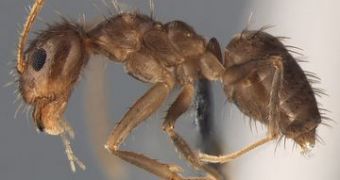The southern United States is now facing a crazy ants invasion. As specialists explain, this species is bound to wreak havoc not just on local ecosystems, but also on homes and other buildings located in the areas they come to inhabit.
This is because, as their name suggests, these ants are not exactly organized when it comes to settling in in new areas.
More precisely, it appears that they tend to have rather sporadic movements and that, once they nest fairly close to some household, they can make their way towards the electrical system and badly damage it.
Thus, the crazy ants appear to have a particularly sweet tooth for insulating materials and electrical wiring.
“When you talk to folks who live in the invaded areas, they tell you they want their fire ants back. Fire ants are in many ways very polite. They live in your yard. They form mounds and stay there, and they only interact with you if you step on their mound,” researcher Ed LeBrun said.
“[The crazy ants] don’t sting like fire ants do, but aside from that they are much bigger pests,” he further added.
Wildlife researchers are also concerned about how the presence of crazy ants in this part of the country will impact on the local fire ants population.
As they point out, the two species seem unable to coexist, and fire ants are the ones which typically get kicked out by the new arrivals.
According to the official website for The University of Texas at Austen, this species of crazy ants, known to the scientific community as Nylanderia fulva, are native to Argentina and Brazil.
Their showing up in the Southeastern United States is the result of their having been carried to this region by humans.
By the looks of it, those living in coastal areas need worry the most, as these ants more often than not prefer warmer temperatures.
Ecorazzi informs us that, unlike other species of ants, these so-called crazy ones are fairly difficult to exterminate, seeing how they have multiple queens and do not seem to be affected by run-off-the-mill pesticides.
Furthermore, researchers say that traditional ant baits do not stir their interest.
Given the fact that this species of ants does not have any natural predators in the southeastern United States, it is no wonder that both wildlife researchers and locals are very much concerned about their beginning to spread through these regions.

 14 DAY TRIAL //
14 DAY TRIAL //